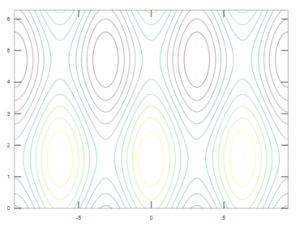

The gridstyle option is not available for contourplot3d. See plot/options and plot3d/option for more information. By default a 25 by 25 grid is used, thus 625 points are generated. For example, the option grid = where m and n are positive integers specifies that the contourplot is to be constructed on an m by n grid at equally spaced points in the ranges a. Options opts are specified as equations of the form option = value. Here again, operator notation must be used.Ī contour plot can also be created from a list of data.

įinally, in the fifth calling sequence, contourplot(, a.b, c.d), f, g, and h must be Maple procedures or operators taking two arguments. In the fourth calling sequence, contourplot(, s=a.b, t=c.d), expr1, expr2, and expr3 must be Maple expressions in the names s and t. The second range c.d can have arguments evaluating to real constants or procedures of one variable.Ī contour parametric plot can be defined by three expressions expr1, expr2, and expr3 in two variables. Operator notation must be used, that is, the procedure name is given without parameters specified, and the ranges must be given simply in the form a.b, rather than as an equation. In the third calling sequence, contourplot(f, a.b, c.d), f must be a Maple procedure or operator which takes two arguments. You cannot supply only one range, or only one variable. In this case, you can still include the variables x and y to specify the order for these variables: contourplot(expr1, x, y). If the ranges in these calling sequences are omitted, Maple tries to determine a suitable range automatically. They specify the range over which expr1 is plotted. d must either evaluate to real constants or be expressions in x. The range a.b must evaluate to real constants. In the first two calling sequences, contourplot(expr1) and contourplot(expr1, x=a.b, y=c.d), the expression expr1 must be a Maple expression in the names x and y. The first three calling sequences describe contour plots in Cartesian coordinates while the last two describe contour parametric plots. The five different calling sequences to the contourplot function above all define a contour plot. In the following sections and examples, all the features and functionalities apply to both contourplot and contourplot3d, with the exception of color bars, which apply only to 2-D contour plots. Furthermore, contourplot3d is faster than contourplot. A 2-D contour can be displayed with a 3-D contour to create a drop-shadow view of the plot (see plottools for an example). The differences are as follows: contourplot3d generates a 3-D view of the contours raised to their appropriate levels, whereas contourplot generates a flat 2-D contour. In other words, these commands both produce a set of level curves of the input function for a discrete set of values (i.e. Real constants, procedures or expressions in xīoth contourplot and contourplot3d take the same arguments and generate a contour plot for a given expression or function.


 0 kommentar(er)
0 kommentar(er)
